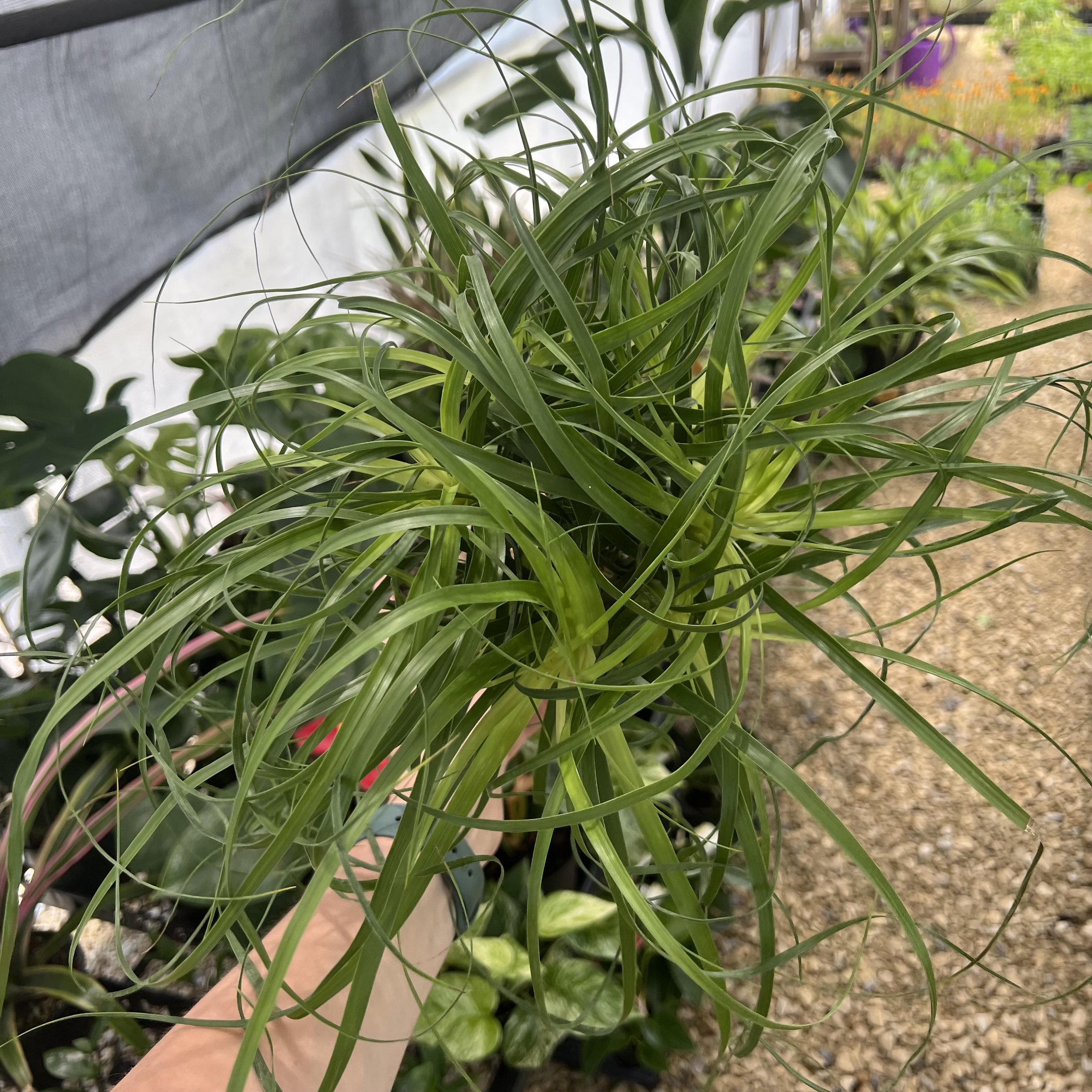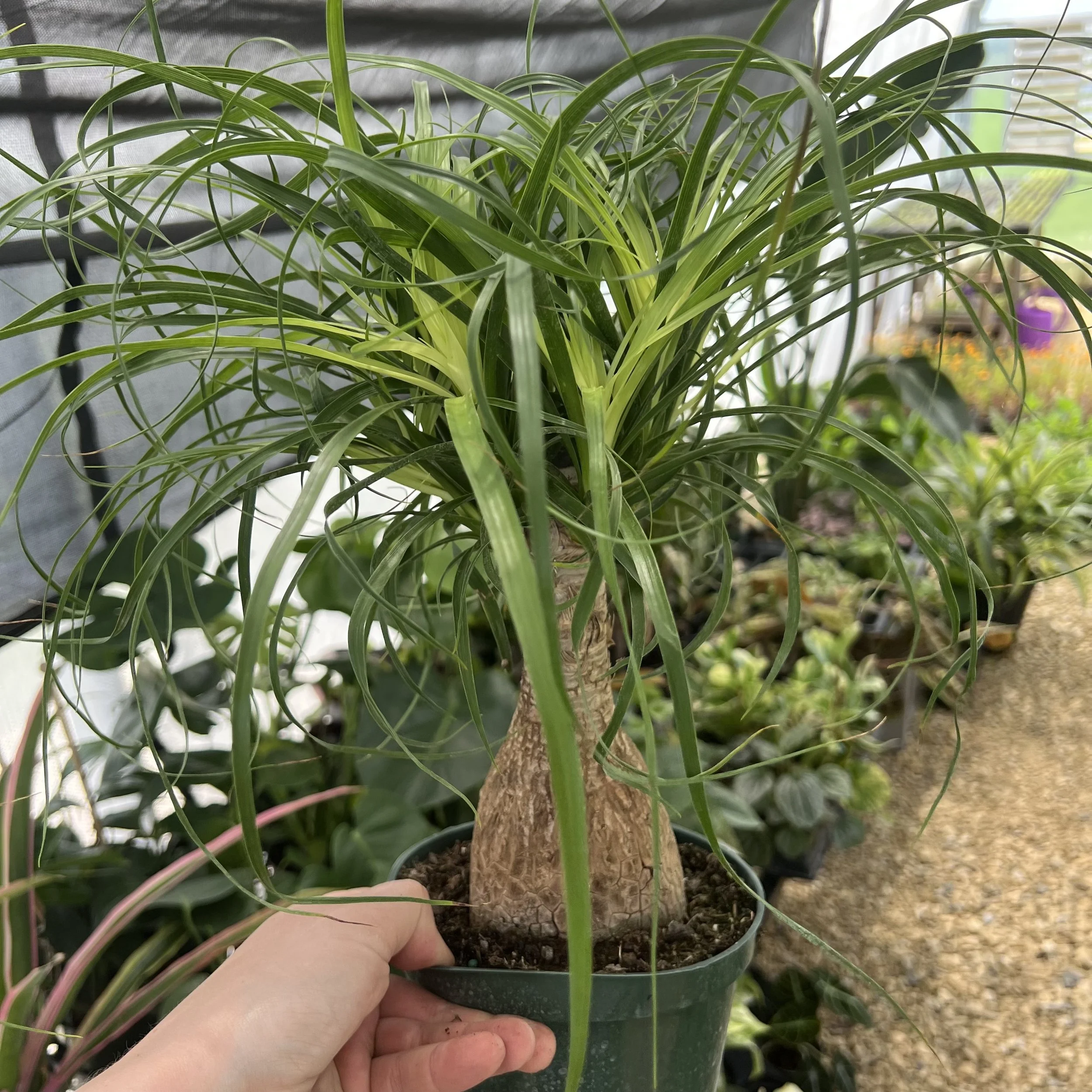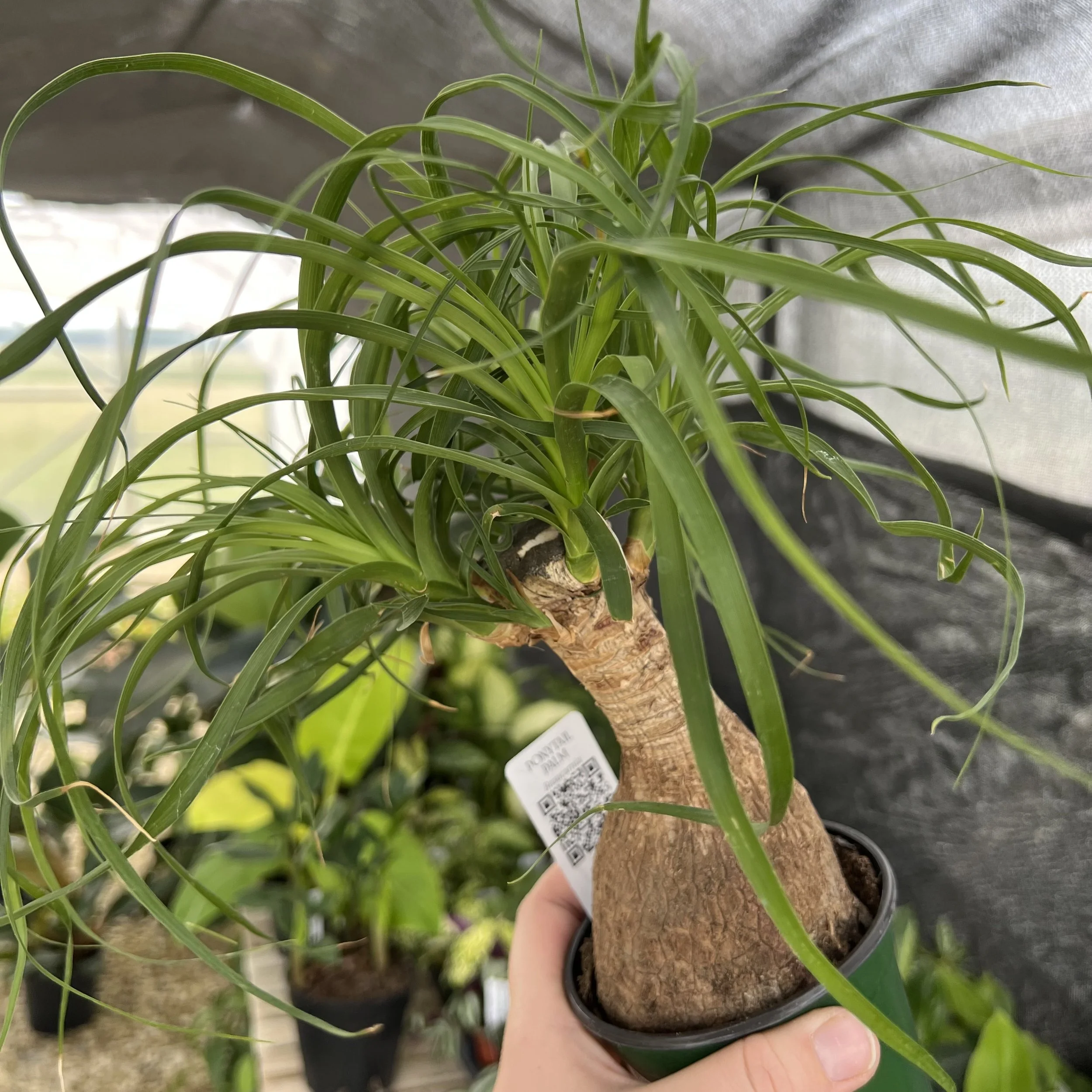
PONYTAIL PALM
Beaucarnia recurvata
Family Asparagaceae
-
Light: Ponytail palm requires bright, indoor lighting. Try to find an east, west or south exposure to place the plant near.
Temperature: 60-90 F
Humidity: any areas
-
Water: Water only when the potting mix is mostly dry to avoid rot issues that are common amongst ponytail palms. They store water in their trunks and can handle periods of dryness.
Repotting: Repot every 2-3 years into a slightly larger container (1-2” increased diameter or depth). Use a well-drained bark mix or a general purpose potting mix if in a pinch.
Fertilizing: Either…
Water Application: Incorporate fertilizer into your watering cycle once per month March through September. Dilute an all purpose fertilizer (20-20-20) by half OR use your favorite fertilizer rated for houseplant use in your water.
Slow Release: Incorporate slow release fertilizer pellets into the top inch of potting soil every 6 months. Apply the rate indicated for indoor plants on the label. If no recommendation for houseplants is present, apply 1/4 to 1/2 the listed rate.
-
Asparagaceae has one obvious member, and it’s a favorite vegetable of many—asparagus! Did you know that the vegetable we consume is actually a flower spike? There are over 2500 genera in this family because of the common flower spike morphology. If you’ve ever seen a dracaena or spider plant flower, you’ll notice they look similar.
A word of caution—just because these houseplants are in the asparagus family, does not mean they are always edible.
-
(Listed in order of commonality…)
Root and trunk decay caused by overwatering
Leaf tip burn caused by high light levels
Spider mites
Cats that are looking for fun
-
Is ponytail palm safe for pets?
Yes
Is ponytail palm actually a palm?
Actually, no. Ponytail palm has moved families taxonomically for years but has never been considered a true palm.
Have a more specific question?
I’m just a few clicks away.



